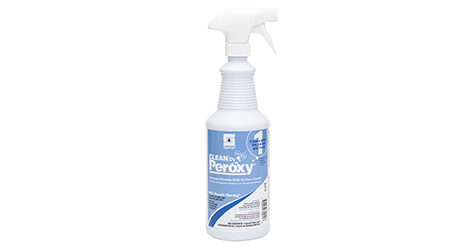From encapsulation machines to backpack vacuums, there are many types of solutions available to help custodians tend to carpet. However, without knowing how to properly use those tools and under which circumstances to apply them, having the proper tools may not be enough.
To help address some common and not-so-common carpet care challenges, Larry Cooper, managing partner of The Experience Convention and Trade Show and president of Textile Consultants, Inc., and Lew Migliore, president of LGM & Associates Technical Flooring Services and publisher of The Commercial Flooring Report, answered several questions from the Cleaning and Maintenance Management (CMM) community.
Q: How do you check the pH level in a carpet?
Larry Cooper: There is either pH paper, or pH meters that you can use. Generally what I try to do is to use distilled water, or if there’s none available, use tap water, apply it to a very small area of the carpet itself, and test it.
Secondly, if I’m concerned about [my reading levels], sometimes I will use a small extraction machine and actually just use clear distilled water and extract a small area—maybe a 3-foot-square area from the carpet—and then measure the pH of the water in the waste tank.
Lew Migliore: I might add that if they’re using tap water, they can check the pH of the tap water first to make sure that it is as close to neutral as possible. That’s real easy to do.
Q: How can you stop wicking or brown spots that surface after carpet dries?
Larry Cooper: If you [are experiencing] wicking, most likely you’re using a hot water extraction process, and you’re not drying rapidly, so there are a couple of things you can do.
First of all, using an interim type of cleaning method, you’re not going to get that type of wicking. If you do have spots or stains in the carpet, you probably want to pretreat those areas first.
[If you have] a plastic back carpet, whatever you see on the surface is probably three to four times larger on the back. Treat the area on the surface, but as you clean, everything from the back is going to wick to the surface. So it either needs to be re-cleaned, or you can use an encapsulation product, spray it on the specific area that has [browning or wicking], and then use either a bonnet-type of pad or a terry cloth-type of towel—there’s a variety of tools—to clean the surface. What you’re doing is kissing the surface and taking that specific browning out of the carpet. Generally it’s going to take several cleanings of hot water extraction to completely remove foreign material that’s in the back and causing residue to come to the surface.
Q: What is the proper cleaning procedure in the event of a flood caused by a restroom overflow?
Larry Cooper: If the water is from a restroom overflow, [staff needs] to carefully evaluate the category of water they’re dealing with. If it is feces or worse, then the carpet is not salvable and should be removed and replaced. Once it’s in the carpets, there is no way to properly clean it. If the water is from a toilet, and [has discoloration] without knowing that there is bacteria in it, only use hot water extraction to clean it. I would make sure to use some type of safe antimicrobial, but certainly ask permission before applying any type of antimicrobial.
Q: Do you have tips for removing tar from carpeting?
Lew Migliore: Tar is from oil, and if the carpet is synthetic, there’s an affinity for the tar to the carpet. You may be able to remove the heavy residual of the tar with a solvent (you have to be careful that you don’t damage the carpet), but you may have discolored the carpet in the process by tracking in the tar.
Larry Cooper: If the fiber is Olefin, and possibly polyester, it’s not going to come out of the carpet. It has such an affinity for [oil that is tracked in from the parking lot], it is not going to come out. If it is a nylon or a wool, [you may] be able to remove a very large percentage of it and make the appearance pretty good. There are new chemical processes available in the industry specifically for removing that type of an oily substance from carpet. So look for those products from your supplier and tell them specifically what chemistry [you need].
For the complete answers to these questions and more, download CMM’s 2015 Carpet Care Webcast. Email Larry Cooper at [email protected] and Lew Migliore at [email protected].


